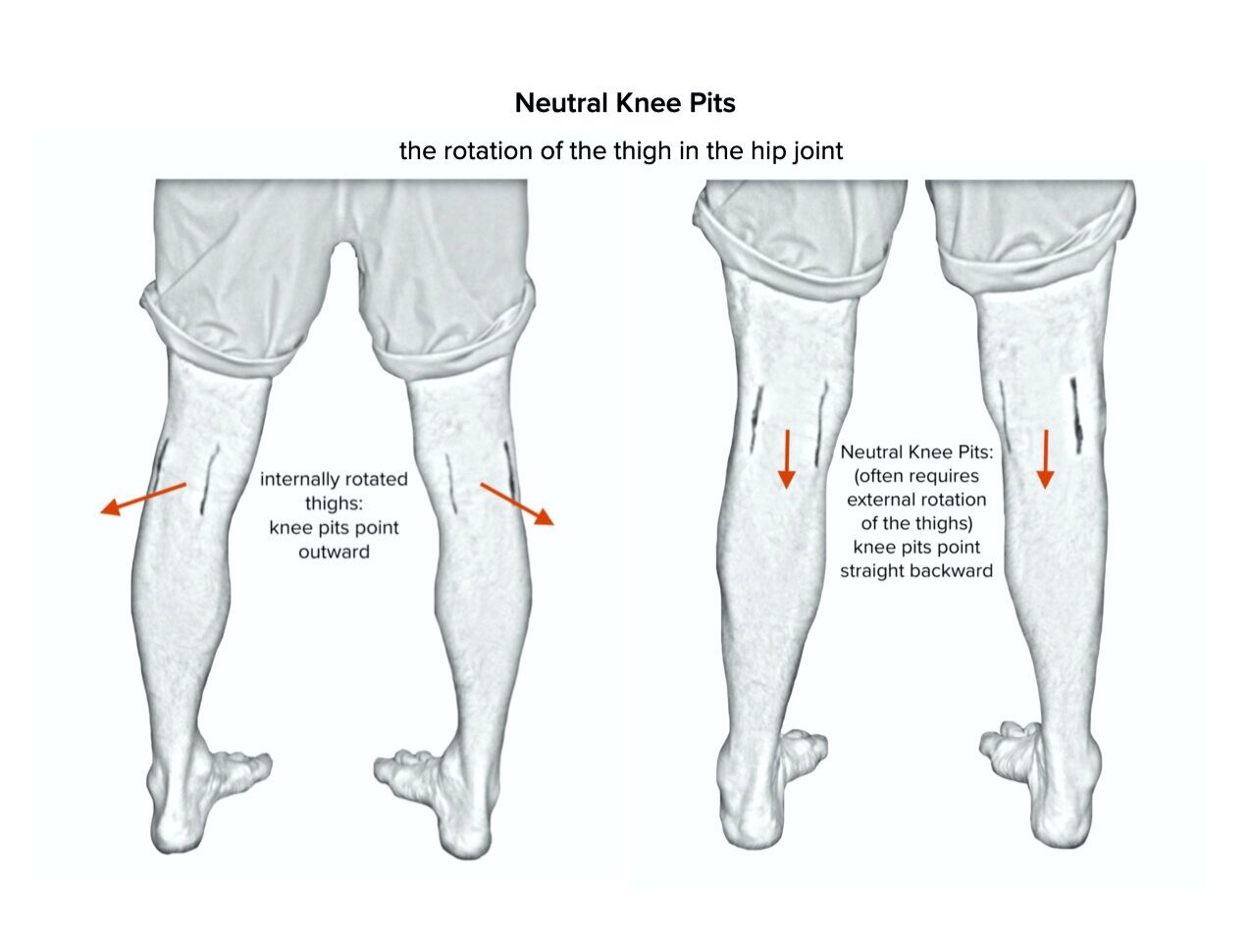Neutral Knee Pits
The Neutral Knee Pit is an alignment marker that will help you understand how your hip is rotating. If our hips have trouble engaging or stabilizing, a general tendency is for the thighs to internally rotate while walking and standing. You can experience this if you bend your knees and let your knees collapse together. If the hips chronically rotate inward, the feet might start to splay outward to compensate. As a consequence you might experience pain and wear and tear at the knee joint due to the torque created from the feet turning one way and the hips rotating the other. Also, when the hips are internally rotated the muscles around the hip don't have as much leverage to stabilize your thigh when you are in the balancing phase of walking (hip listing and standing on one leg). To begin to find better balance, hip stability, along with healthier ankles and knees, we need to learn what neutral rotation of the hip is. You might think that just by looking at the knee caps you can tell if your knee joint is pointing straight forward and back, but actually the kneecap can travel to either side of the knee joint depending on which quadricep muscles are tighter. So, instead, look at the back of the knees - also known as the knee pit. The hamstring tendons pass over each side of the knee joint, when the hip is internally rotated, those tendons and the pit of the knee will appear to point out to the sides, when the hip is eternally rotated, the tendons and knee pit will appear to point towards each other. Neutral alignment and the best way to walk forward is when those tendons and knee pits are pointing straight backwards and are parallel to each other. You can draw on those tendons with a marker to make them more visible. Most of us need to work on the external rotation of the thigh, so while standing, rotate your thighs externally and bring your knee pits to neutral. Notice that the arches and insoles of the feet might lift. The rotation of the hip is a main component that stabilizes the arches of the feet. Once you've externally rotated the thighs and kept your foot on the ground, try standing on one leg. Notice if your ankle and thigh wobble inward and outward. Practice toward maintaining the external rotation while balancing on one leg and you'll find an improvement in your balance, your arches, and your knee health!

